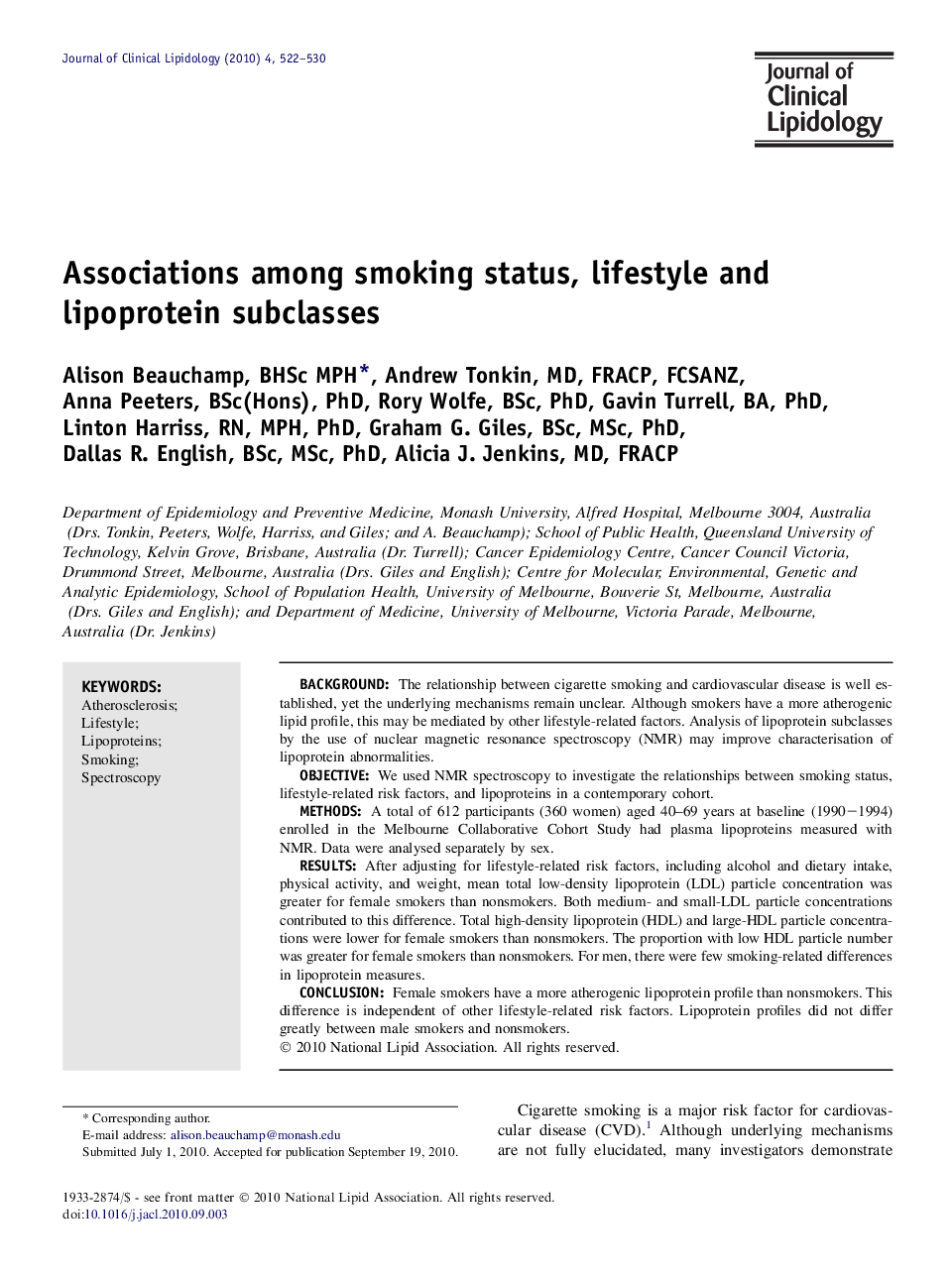| Article ID | Journal | Published Year | Pages | File Type |
|---|---|---|---|---|
| 2966150 | Journal of Clinical Lipidology | 2010 | 9 Pages |
BackgroundThe relationship between cigarette smoking and cardiovascular disease is well established, yet the underlying mechanisms remain unclear. Although smokers have a more atherogenic lipid profile, this may be mediated by other lifestyle-related factors. Analysis of lipoprotein subclasses by the use of nuclear magnetic resonance spectroscopy (NMR) may improve characterisation of lipoprotein abnormalities.ObjectiveWe used NMR spectroscopy to investigate the relationships between smoking status, lifestyle-related risk factors, and lipoproteins in a contemporary cohort.MethodsA total of 612 participants (360 women) aged 40–69 years at baseline (1990−1994) enrolled in the Melbourne Collaborative Cohort Study had plasma lipoproteins measured with NMR. Data were analysed separately by sex.ResultsAfter adjusting for lifestyle-related risk factors, including alcohol and dietary intake, physical activity, and weight, mean total low-density lipoprotein (LDL) particle concentration was greater for female smokers than nonsmokers. Both medium- and small-LDL particle concentrations contributed to this difference. Total high-density lipoprotein (HDL) and large-HDL particle concentrations were lower for female smokers than nonsmokers. The proportion with low HDL particle number was greater for female smokers than nonsmokers. For men, there were few smoking-related differences in lipoprotein measures.ConclusionFemale smokers have a more atherogenic lipoprotein profile than nonsmokers. This difference is independent of other lifestyle-related risk factors. Lipoprotein profiles did not differ greatly between male smokers and nonsmokers.
